The canoe has lost its soul.
For decades the vessel hung from the ceiling of a Seattle salmon restaurant, and is currently in the possession of the city’s Burke Museum, estranged from Taiwan’s Orchid Island and the Tao community that built it.
Syaman Lamuran, a Tao Aborigine, has come to Seattle on a journey of discovery and restoration. He is participating in Tribal Journeys, a three-week trip that began on Monday and will see Native American and First Nation’s communities bring more than 100 traditional and modern canoes up the Pacific West Coast.
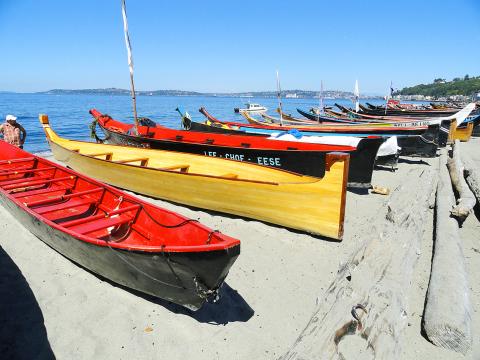
Photo courtesy of Gary Smoke
Lamuran will then return to Seattle to determine if the vessel of his ancestors can regain its lost spirit.
CONNECTING COMMUNITIES
Lamuran’s journey is organized and funded by ATAYAL, an American nonprofit that seeks to connect indigenous communities around the world. Gary Smoke, who has lived in Taiwan for 26 years and serves as the organization’s international relations director, says the journey is more of an exploratory trip to initiate contact between Lamuran’s Tao with Native Americans and Canada’s First Nation’s people. Next year, with more time to raise money, Smoke hopes to bring a full Tao crew with a freshly built canoe.
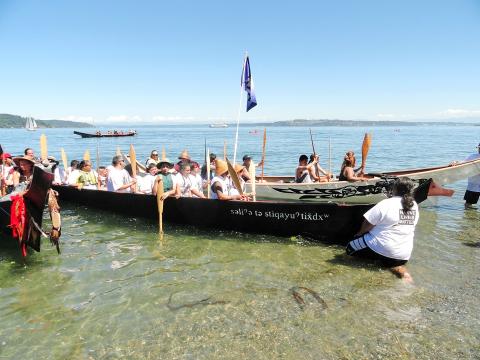
Photo courtesy of Gary Smoke
“It’s a connection between maritime peoples from across the world,” Lamuran says.
ORCHID ISLAND TO SEATTLE
Smoke, a native of the Seattle area, learned about Tribal Journeys while visiting his family last year, when he observed part of the journey and saw similarities between Pacific Northwest canoe culture and that of the Austronesians, who are believed to have spread across Southeast Asia and the Pacific Ocean from Taiwan.
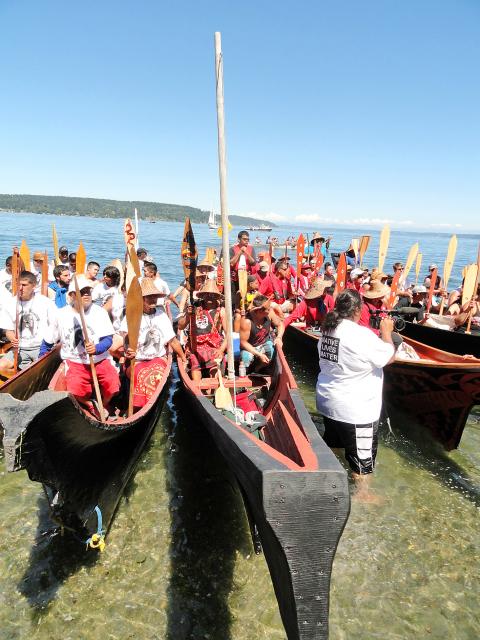
Photo courtesy of Gary Smoke
“I was determined to get some people from Taiwan to join so that we could develop a relationship, exchange cultural ideas, languages and even students,” Smoke says.
Smoke met Lamuran at the International Austronesian Conference in Taipei last November. As chairman of the Tao Foundation (蘭嶼部落文化基金會), Lamuran has been actively promoting and preserving his culture. Smoke says it took a significant amount of time to plan the trip and get a full commitment from the foundation, which left them with six weeks to raise US$8,000.
There aren’t enough funds for Lamuran to bring his own canoe, but he still has a chance to navigate the waters of the Pacific Northwest. Smoke says that due to the large number of participants, canoe families are formed so different groups can take turns “pulling” the canoes, the preferred Native American term, rather than “paddling” or “rowing.” Lamuran met his canoe family on Monday.
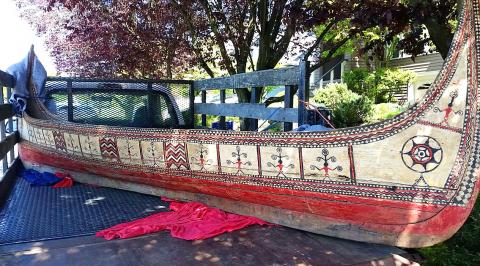
Photo courtesy of Michael Jacobson
At the end of each leg, the pullers need to request permission from the host community to come ashore following a specific protocol. After all the canoes arrive, a feast commences with dancing and singing.
WANDERING CANOE
Lamuran says he hopes to learn about how other indigenous people deal with drastic environmental changes and various social issues. He’s also interested in intratribal relationships as well as how they deal with outsiders and mainstream culture.
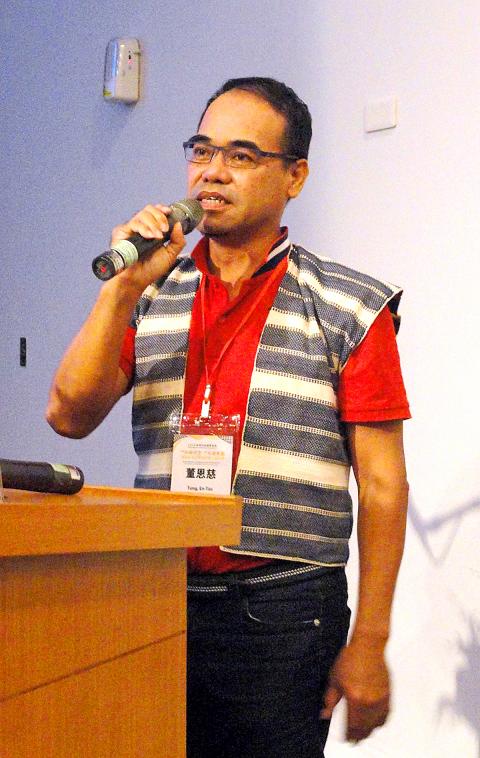
Photo courtesy of Gary Smoke
“I hope that more people learn about Taiwan’s maritime culture and learn that [Taiwan’s inhabitants] are more than just Han Chinese,” he says.
After the journey, Lamuran’s group will head to the museum, located on the University of Washington campus, on July 27 to visit the Tao canoe. They will meet with curators and local Native American groups to discuss the vessel and other indigenous issues.
The canoe was first brought to the US in the 1970s by late restaurateur Ivar Haglund, who obtained it during a trip to Taiwan to buy Chinese-style furniture for his property. Haglund kept it in his Ivar’s Indian Salmon House, since renamed Ivar’s Salmon House, and, during a renovation in the 1990s, removed all the non-Pacific Northwest artifacts.
The canoe was moved to a warehouse where it languished until local collector and former Taiwan resident Michael Jacobson bought it, along with other Aboriginal artifacts, in 2015. He then donated the canoe to the museum.
Lamuran says the canoe needs a soul because it has been separated from its homeland for so long.
“It’s a real shame,” he says. “It doesn’t matter why the canoe left its home, it was built by the hands of my ancestors and the wood from our island. I hope that in the future I can bring an elder [to the museum] to perform a ritual so as to restore its soul.”
For more information, visit: www.atayal.org

On April 26, The Lancet published a letter from two doctors at Taichung-based China Medical University Hospital (CMUH) warning that “Taiwan’s Health Care System is on the Brink of Collapse.” The authors said that “Years of policy inaction and mismanagement of resources have led to the National Health Insurance system operating under unsustainable conditions.” The pushback was immediate. Errors in the paper were quickly identified and publicized, to discredit the authors (the hospital apologized). CNA reported that CMUH said the letter described Taiwan in 2021 as having 62 nurses per 10,000 people, when the correct number was 78 nurses per 10,000

As we live longer, our risk of cognitive impairment is increasing. How can we delay the onset of symptoms? Do we have to give up every indulgence or can small changes make a difference? We asked neurologists for tips on how to keep our brains healthy for life. TAKE CARE OF YOUR HEALTH “All of the sensible things that apply to bodily health apply to brain health,” says Suzanne O’Sullivan, a consultant in neurology at the National Hospital for Neurology and Neurosurgery in London, and the author of The Age of Diagnosis. “When you’re 20, you can get away with absolute

May 5 to May 11 What started out as friction between Taiwanese students at Taichung First High School and a Japanese head cook escalated dramatically over the first two weeks of May 1927. It began on April 30 when the cook’s wife knew that lotus starch used in that night’s dinner had rat feces in it, but failed to inform staff until the meal was already prepared. The students believed that her silence was intentional, and filed a complaint. The school’s Japanese administrators sided with the cook’s family, dismissing the students as troublemakers and clamping down on their freedoms — with

As Donald Trump’s executive order in March led to the shuttering of Voice of America (VOA) — the global broadcaster whose roots date back to the fight against Nazi propaganda — he quickly attracted support from figures not used to aligning themselves with any US administration. Trump had ordered the US Agency for Global Media, the federal agency that funds VOA and other groups promoting independent journalism overseas, to be “eliminated to the maximum extent consistent with applicable law.” The decision suddenly halted programming in 49 languages to more than 425 million people. In Moscow, Margarita Simonyan, the hardline editor-in-chief of the